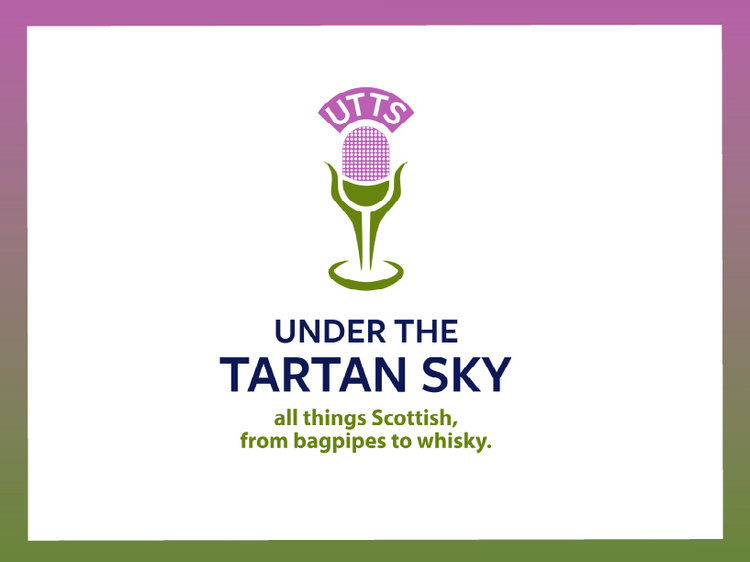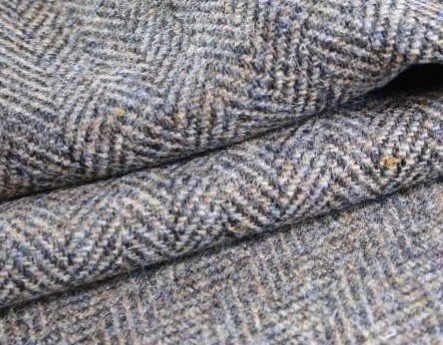Ever since Adam and Eve found their first fig leaves, man has sought to create clothing for protection from the environment using whatever materials could be found to hand. In the western isles of Scotland, the Outer Hebrides, where the climate can be cold, wet, and harsh, residents turned to the wool of their sheep for handmade clothing. After satisfying their own needs, this warm, hard wearing homespun cloth was often traded or used as a sort of currency to barter for other needed commodities. Known as “tweel” – Scots for twill, it would, by accident, later become known as tweed.
In 1836, Alexander Murray, the 6th Earl of Dunmore, inherited the North Harris estate but this passed quickly to his wife, Lady Catherine Herbert following his death just seven years later in 1843. Lady Catherine recognized the quality of the cloth woven by local residents and commissioned some in the family tartan to be made into jackets for the estate’s ghillies and gamekeepers. She further began to share the fabric with her aristocratic friends in London and a cottage industry was born.
In the early 1900’s the island weavers banded together and formed the Harris Tweed Association. Then a trademark was applied for and granted. Harris Tweed’s famous orb trademark is recognized worldwide and is the oldest trademark in continuous use in British History.
With that trademark came the original official definition of Harris Tweed being, “ a tweed, hand-spun, hand-woven and dyed by the crofters and cottars in the Outer Hebrides.” In 1993 Harris Tweed became the only fabric to be governed by an Act of Parliament. The Harris Tweed Act established the Harris Tweed Authority and set out a statutory definition for the cloth. "Harris Tweed means a tweed which has been hand woven by the islanders at their homes in the Outer Hebrides, finished in the islands of Harris, Lewis, North Uist, Benbecula, South Uist and Barra and their several purtenances (The Outer Hebrides) and made from pure virgin wool dyed and spun in the Outer Hebrides" From its earliest days, Harris Tweed has been woven at home, by individual weavers and that continues to distinguish the fabric into the 21st century.
1960 photo courtesy Harris Tweed Authority. Miriam Hamilton photo courtesy Miriam Hamilton, The Weaving Shed. See website link below.
Lorna Macaulay is CEO of the Harris Tweed Authority. She is a 3rd generation Harris Tweed worker in her family and came to her role at the Authority eleven years ago after a stint at the Highlands and Islands Enterprise, an economic development agency for the region. At the time she was the first woman placed in a management position in the Harris Tweed industry.
The authority is the guardian of the cloth and its trademark orb – it exists to promote and maintain the authenticity, standard, and reputation of Harris Tweed. The authority oversees production and inspection of the cloth and eventually awards the certification allowing fabric to be marked as Harris Tweed. Macaulay shared that a recent redesign of the iconic label was undertaken to incorporate many elements (not visible to the naked eye) to guard against counterfeiting. She also noted the industry has had to redefine itself in recent times following a casualization in the manner of dress. Where the gentleman’s tweed jacket was for decades the industry standard, reaching its peak in the 1960, today Harris Tweed is equally at home as an interior design element for drapes, cushions, upholstery and more.
For decades the Harris Tweed jacket has been a staple of the well dressed gentleman’s wardrobe, the style reaching its peak in the 1960’s according to Macaulay but never truly going out of style, as demonstrated by the author as a youngi(ish) television journalist in the late 1980s.
Harris Tweed today can be found in a wide variety of colors and patterns from solids, stripes, checks, herringbones and even. yes, tartans. While the three Harris Tweed mills work in large commercial orders, Macaulay says it is possible to work with individual producers to create your own bespoke tweed whether for a family, an estate, or possibly even a small business. And individual weavers also often produce goods of their own to sell, like Nikki Crabtree, who has “seized the day” and her Harris Tweed face masks are currently selling like hotcakes!
A few examples of the many styles and colors of Harris Tweed. Photos 1-6 from top left are courtesy Gordon Macdonald, A Harris Tweed Weaver, and photos 7-9 are courtesy Joanne Mcdonnell, Urgha Loom Shed. See links to their individual online shops below.
These Harris Tweed face masks are selling like hotcakes. At this writing there is a three week delay from order to manufacture and shipping. They are the brainchild of Harris Tweed weaver Nikki Crabtree, The Crafty Weaver
Where once a career in the Harris Tweed industry was not very highly thought of, today Macaulay says she is most proud of the fact that a job in the Harris Tweed industry is now viewed as a career of choice by young islanders. They see it as a “sexy, attractive, global” opportunity on their own doorstep. The industry offers not just weaving opportunities (a skill which is now accredited and for which the Authority has established mentorship programs) but other opportunities in the fields of sales, marketing, graphic design, legal, accounting, and more.
From a simple crofter’s cloth to high fashion red carpets, the Harris Tweed story is an interesting one. It is a globally recognized fabric of highest quality standards yet still very much a wee cottage industry that provides vital employment opportunity for the people of the Outer Hebrides. It is truly Scotland’s Homegrown Cloth!
For more information:
• Harris Tweed Authority (website)
•Harris Tweed (A BBC Travel Story)
These individual weavers/producers graciously provided photographs to support this blog. You can see their tweeds and other wares on their websites here:
•Nikki Crabtree, The Crafty Weaver
•Miriam Hamilton, The Weaving Shed
•Gordon Macdonald, A Harris Tweed Weaver
•Joanne Mcdonnell, Urgha Loom Shed


















